Plan checklist
Eustace March 23 Kat
1562 Beach Road, Sand Lake
Planting plan created by Water Rangers
Funded by • Department of Fisheries and Oceans Canada •
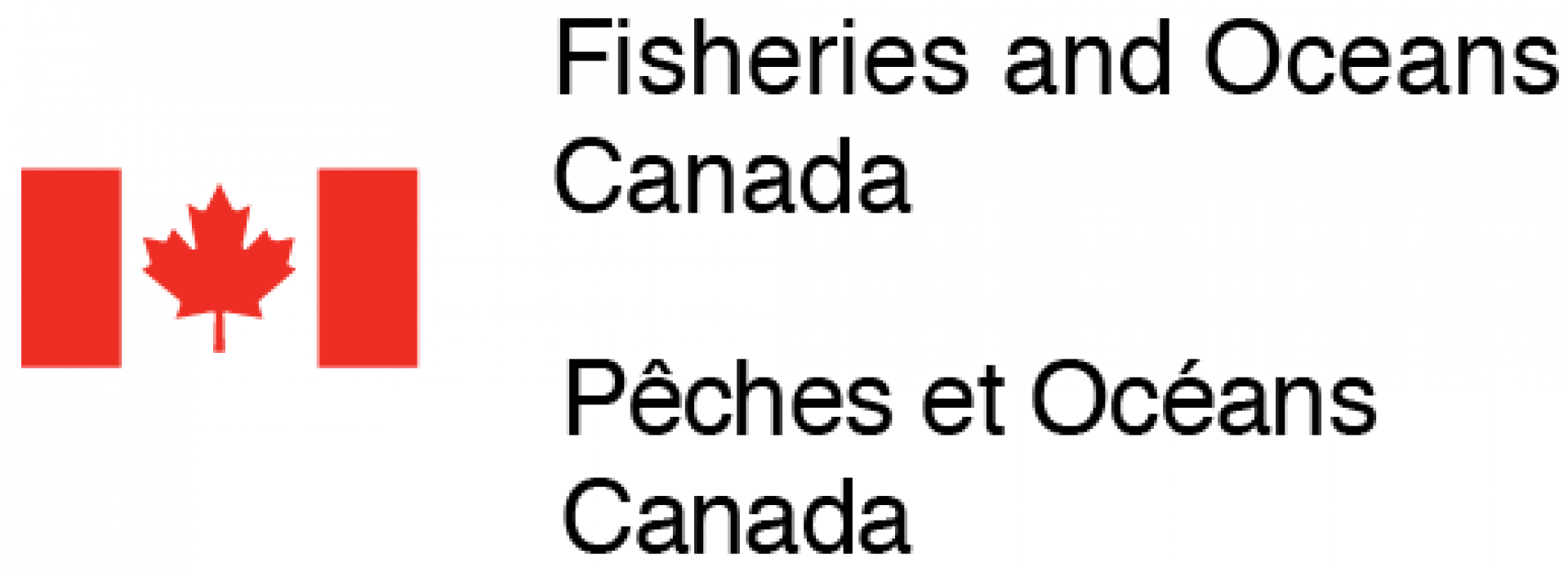
Schedule A:
Plants & Property
Land Characteristics
This planting plan is designed based on the land characteristics identified during the day of the site visit. Plants are chosen according to the soil and light conditions on your property. The number of plants chosen for each planting compartment takes into account the square metre area of the space, as well as the amount of current vegetation cover. Your property is part of ecoZone: 4b
Land Characteristics by Compartment
| Length | Width | Area | pH | Soil | Moisture | Light | Height | |
|---|---|---|---|---|---|---|---|---|
| A | 2m | 2m | 4m2 | acidic | sandy | dry | partial sun | max 1.5m |
| B | 10m | 5m | 50m2 | acidic | sandy | dry, normal | full sun | max 1.5m |
| C | 7m | 6m | 42m2 | acidic | sandy | dry | full sun | max 1.5m |
| D | 6m | 7m | 42m2 | acidic | sandy | dry | ||
| E | 5m | 7m | 35m2 | acidic | clay | dry | full sun, partial sun | max 1.5m |
| 30m | 5.4m | 173m2 |
Plant Selection Summary
The following shrubs and trees are chosen for their suitability and survivability given the current soil and light conditions in each compartment on your property, as well as preferable features.
| Plant Species | A | B | C | D | E | Potted | Bareroot | Wildflower |
|---|---|---|---|---|---|---|---|---|
| Bush Honeysuckle | 3 | 2 | 7 | 6 | 6 | 11 | 1 | |
| Pasture Rose | 2 | 6 | 1 | 7 | 9 | 6 | 19 | |
| Canadian Serviceberry | 5 | 6 | 6 | 5 | 12 | |||
| Black Spruce | 3 | 3 | ||||||
| Lowbush Blueberry | 2 | 2 | ||||||
| Allegheny Serviceberry | 7 | 2 | 5 | 4 | ||||
| Smooth Blackberry | 7 | 7 | ||||||
| Ninebark | 6 | 3 | 3 | 6 | ||||
| Subtotal | 5 | 13 | 19 | 33 | 20 | 28 | 59 | 3 |
| Totals | 90 | |||||||
Plant Information
The following table summarizes key information about each plant selected for your property.
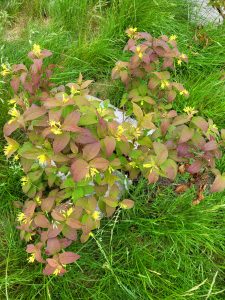
|
Bush HoneysuckleHeight: 1m
The Bush Honeysuckle is a small, hardy, deciduous shrub that rarely grows taller than 1 m in height. The leaves are simple, oppositely arranged, ovate shaped, and have finely toothed margins. During the spring and summer, the leaves are dark green in colour, then in the fall they take on a variety of colours ranging from a deep purple to light yellow. The flowers are small, showy, yellow to orange colored, trumpet shaped, appear in clusters on the tips of branches, and bloom between June and July. The flowers are beneficial to pollinator species, including hummingbirds and butterflies. The roots of the Bush Honeysuckle are fibrous, giving it the ability to form thickets and making it an ideal shrub to plant for erosion control.
|
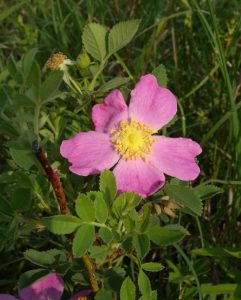
|
Pasture RoseHeight: 1.5 m
The Pasture Rose is a small (1.5m), deciduous shrub which often spreads through suckers to form colonies or thickets in the wild. This species grows erect from a central base with sprawling branches, creating a dense, irregular bush. This shrub produces compound leaves, consisting of 5 to 7 leaflets arranged alternately along the branches. The Pasture Rose yields beautiful 5 centimeter wide white to pink flowers, which bloom in the early summer lasting for approximately a month. The rose hip fruit develops after the flower has died and turns bright red as it ripens. During the fall, the olive green leaves turn yellow to deep red or purple.
|
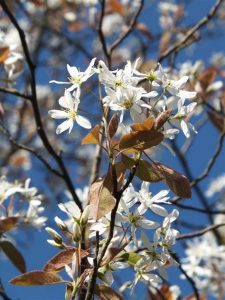
|
Canadian ServiceberryHeight: 3-5 m
The Canadian Serviceberry is a multi-stemmed shrub or small tree which grows from 3-5 m in a dense round form. This plant may also be known by the common names: Juneberry, Shadblow, or Shadbush. Early in the spring, prior to leaf development, clusters of fragrant, showy white flowers bloom along the branches. By July, these flowers give way to the fruiting bodies. The fruits are initially small, green berries, which grow to the size of blueberries and turn a deep purple-blue upon maturation during the fall. Leaves produced are finely toothed and spear-shaped. Throughout the summer, leaves are dark green and turn a dramatic orange-red during the fall.
|
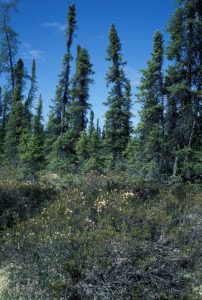
|
Black SpruceHeight: 20-30 m
The Black Spruce varies in size depending on soil conditions. On poorly drained sites, the trees are typically grow smaller and slower, up to 20m high and 30cm in trunk diameter. However, on well-drained upland sites, these trees can grow up to 30 m high and 60 cm in trunk diameter. The branches of the Black Spruce are comparatively shorter than other spruce species, and lower branches can appear extremely weighted and droopy. The crown of the tree is often very dense, and oddly shaped with many cones. The needles are short, single, and straight with blunt points, ranging from 8-15 mm in length. They are a dull grayish-green colour with lines of white spots on the under surface of the needle. Seed cones are broadly ovoid and egg shaped, 2-3 cm in length, and have a dark purplish-brown colour. The scales are brittle and tight fitting with an irregularly toothed margin. The cones mature around September and can remain on the tree for up to 30 years, gradually releasing seeds in normal conditions, while quickly releasing seeds following traumatic events, like forest fires. Open cones are almost spherical, brittle and toothed. The bark is reddish or grayish brown in colour when young, becoming darker, and boasting more prominent scales with age.
|
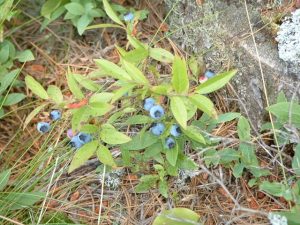
|
Lowbush BlueberryHeight: 60 cm
The Lowbush Blueberry is a low growing, deciduous shrub that only reaches about 60 cm in height. This species grows erect, with many spreading and ascending branches. New branch growth is soft and green-brown in colour, while older branches are woody and have shredded looking bark. The leaves are small, simple leaves alternately arranged, and have finely serrated margins. During the fall, this shrub's lustrous blue-green leaves turn into an electrifying bronze, scarlet or crimson colour. Clusters of small, white, bell-shaped flowers bloom between May and June. By July, the flowers give way to clusters of edible blueberries. These berries provide a significant food source for a variety of bird and mammal species.
|
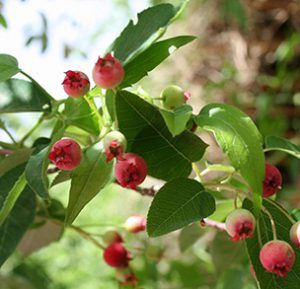
|
Allegheny ServiceberryHeight: 3-10 m
The Allegheny Serviceberry is an attractive deciduous shrub species that can reach about 3 m as a shrub or up to 10 m as a tree. This plant may also be known by the common name Smooth Serviceberry. It can be grown either in the form of a single stem tree or multi-stemmed shrub comprised of two or three smaller trunks. The leaves are dark green, alternately arranged, oval shaped, and have finely toothed margins. The flowers are showy, fragrant, have 5 petals, appear in drooping clusters, and bloom in April before the leaves emerge. The flowers produce small reddish purple to black berries, which are edible and flavorful to humans. The fruit is beneficial to wildlife species, including birds and small mammals. The root system is valuable for controlling erosion and stabilizing loose soil. This plant is often used for ornamental purposes as a small tree in urban areas.
|
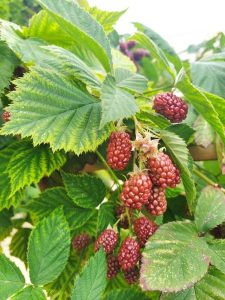
|
Smooth BlackberryHeight: 2m
The Smooth Blackberry, also referred to as Canadian Blackberry, Thornless Blackberry and Smooth Highbush Blackberry, is a medium sized shrub species and member of the Rose family, that reaches heights of 2m. This species forms irregular thickets with reddish-purple to brown stems. Leaves produced are lance-shaped, arranged alternately along the branches and are compounded with five leaflets. During the fall, the leaves turn from light green to dark red or deep purple. During the spring and summer, five-petaled, white flowers grow in clusters of up to 25 at the end of the branches. By mid-summer, the flowers give rise to edible purplish-black fleshy fruits, which ripen by late August. The fruiting bodies of this shrub provide an important abundant food source for many birds and mammal species. This shrub is good for controlling erosion and stabilizing shorelines.
|
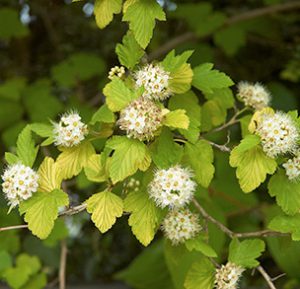
|
NinebarkHeight: 2-3m
The Common Ninebark is a very hardy, large (2-3m in height), deciduous shrub naturally occurring within riparian zones. This species is often planted as an ornamental shrub for its exfoliating bark which reveals reddish-light brown inner bark. This shrub is multi-stemmed with numerous horizontal and ascending branches creating a full, round shape. The Common Ninebark produces dull green, ovate to round shaped leaves with three to five lobes per leaf. During the fall the leaves turn brilliant yellow or dark purple. Between May and June, showy, bell-shaped flowers bloom in clusters on the terminal ends of the branches. During the summer, these flowers give way to small green or green-yellow berries which turn a bright red upon ripening.
|
Compartment A
Naturalization Area
 pH: acidic
pH: acidic Depth: potted, bareroot, wildflowers
Depth: potted, bareroot, wildflowers-
 Moisture: dry
Moisture: dry -
 Soil Type: sandy
Soil Type: sandy  Plant Height: max 1.5m
Plant Height: max 1.5m-
 Light conditions: partial sun
Light conditions: partial sun
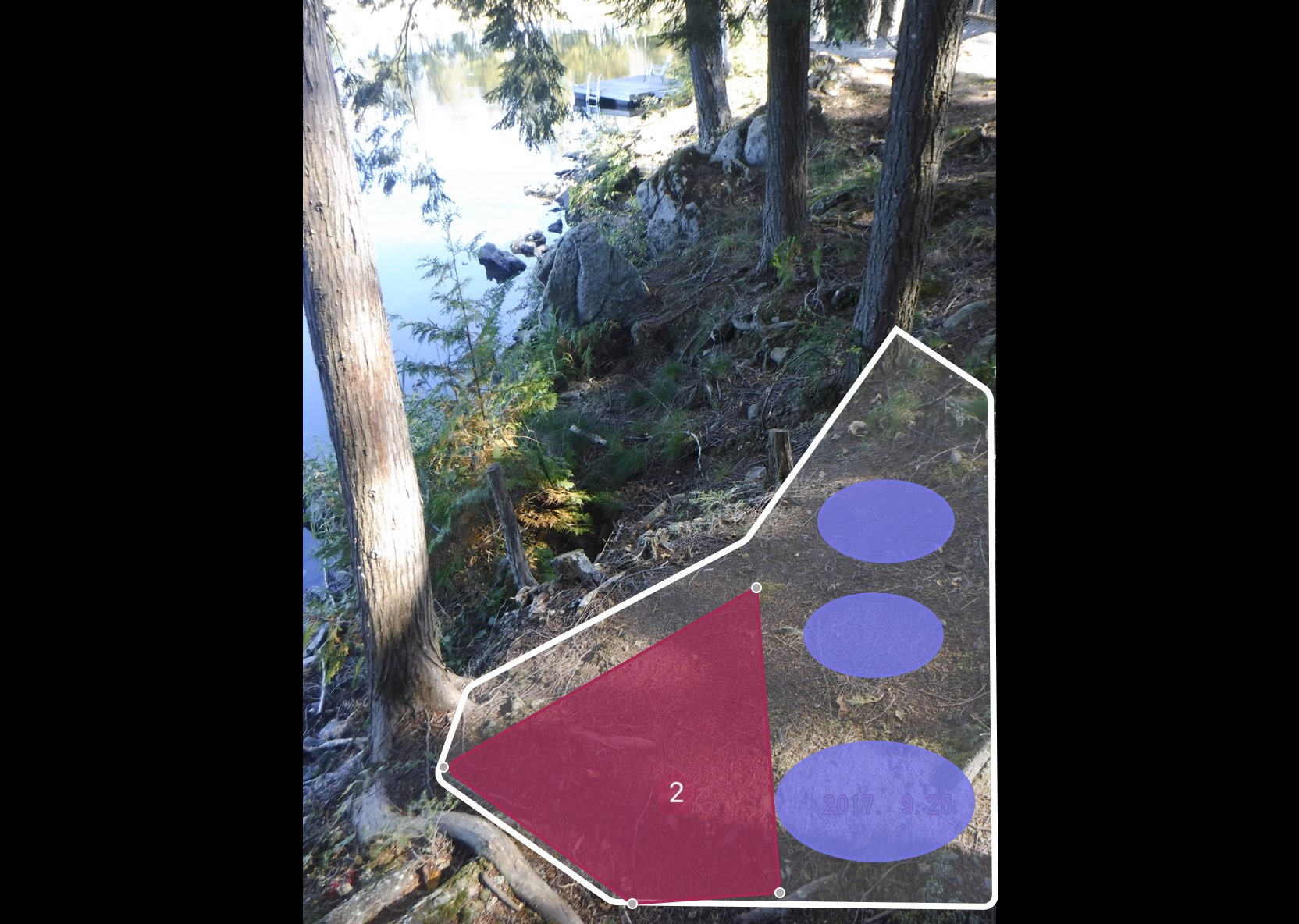
Compartment B
Naturalization Area
 pH: acidic
pH: acidic Depth: potted, bareroot
Depth: potted, bareroot-
 Moisture: dry, normal
Moisture: dry, normal -
 Soil Type: sandy
Soil Type: sandy  Plant Height: max 1.5m
Plant Height: max 1.5m-
 Light conditions: full sun
Light conditions: full sun
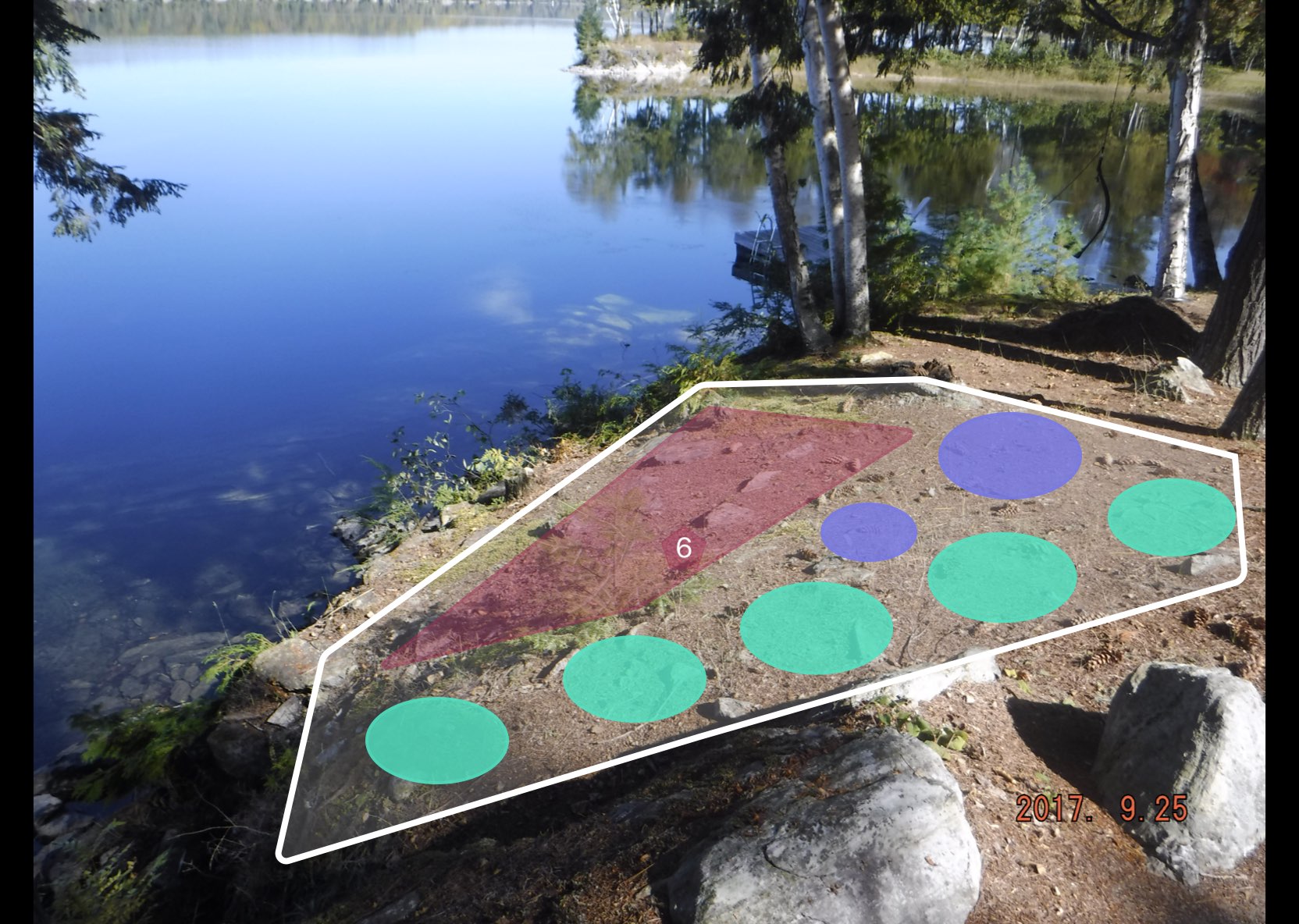
Compartment C
Naturalization Area
 pH: acidic
pH: acidic Depth: potted
Depth: potted-
 Moisture: dry
Moisture: dry -
 Soil Type: sandy
Soil Type: sandy  Plant Height: max 1.5m
Plant Height: max 1.5m-
 Light conditions: full sun
Light conditions: full sun
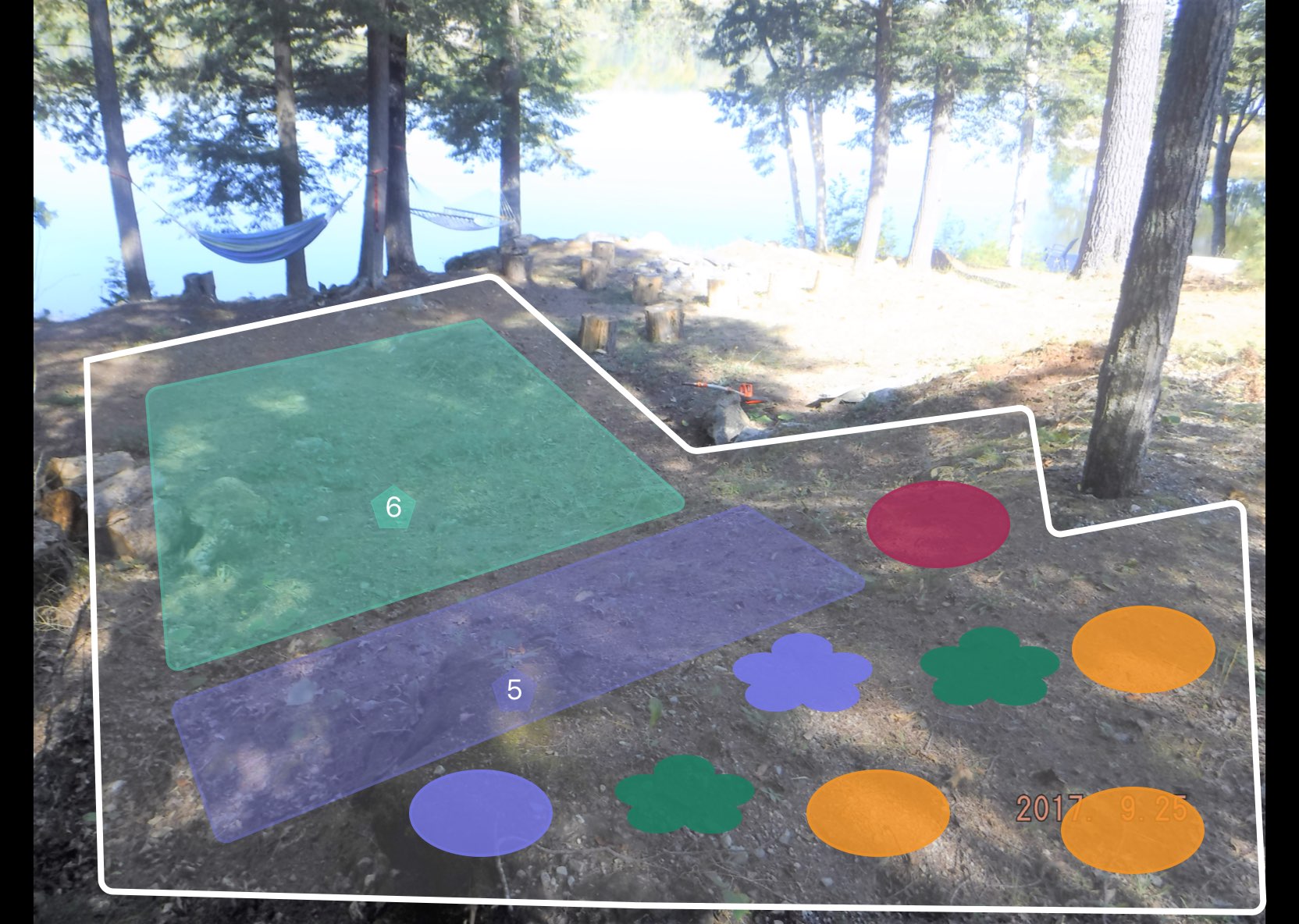
Compartment D
Naturalization Area
Test pH: acidic
pH: acidic-
 Moisture: dry
Moisture: dry -
 Soil Type: sandy
Soil Type: sandy
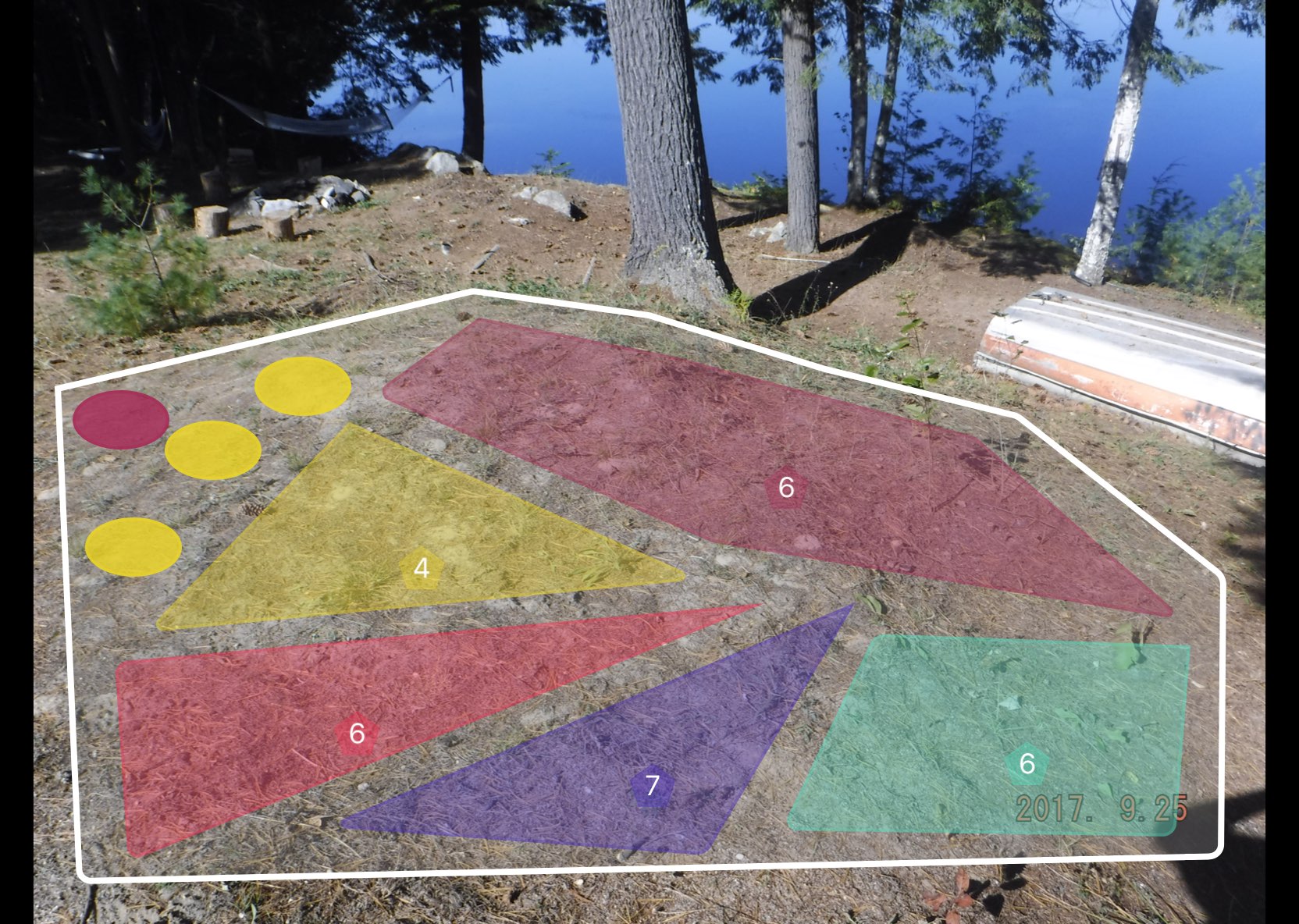
Compartment E
Naturalization Area
 pH: acidic
pH: acidic Depth: potted
Depth: potted-
 Moisture: dry
Moisture: dry -
 Soil Type: clay
Soil Type: clay  Plant Height: max 1.5m
Plant Height: max 1.5m-
 Light conditions: full sun, partial sun
Light conditions: full sun, partial sun
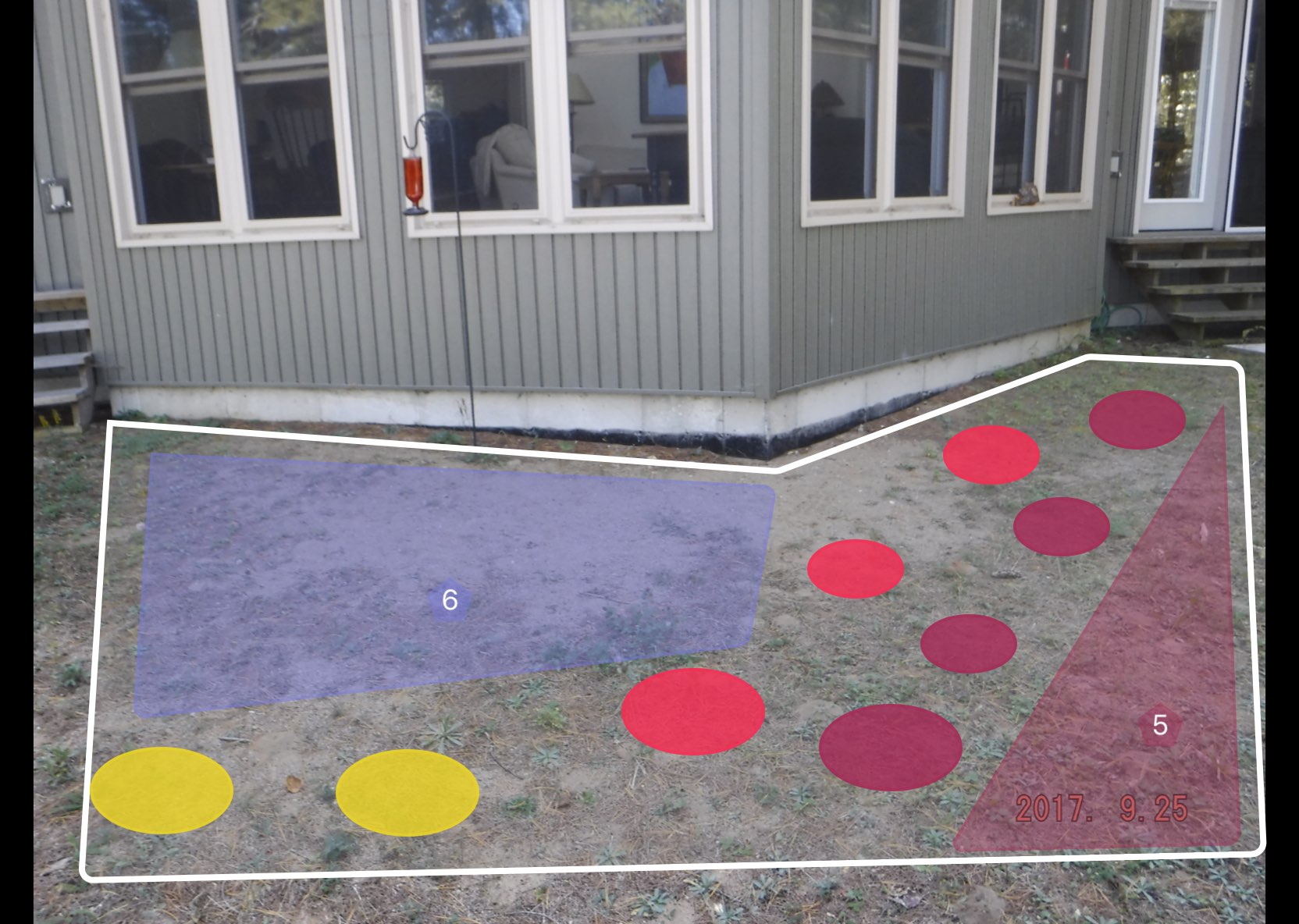
Schedule B
Financial Summary
Project by: Water Rangers
Shoreline Re-Naturalization Starter Kit includes: free site visit, customized re-naturalization planting plan for your shoreline property, native plants including free bare root (small) and potted (large) plants and wildflowers, coconut fibre pads to deter grass from growing around new plantings, tree guards for all deciduous trees, mulch for your wildflowers, Plant Care Guide with instructions on how to take care of your new plants, Habitat Creation Guide and a Wildflower Garden Guide.
Our planting plans are created onsite with you and provide detailed information and plans to re-naturalize your shoreline property. We take photos of areas for planting and overlay native plants that are well suited to your property based on site conditions such as soil type and sunlight availability.
We will work with you to create a plan that works for you including options for low growing plants in areas where views are important.
| Item | Quantity | Cost/Item | Subtotal |
|---|---|---|---|
| Starter Kit fee | $250 | ||
| Free potted plants | 10 | $0 | $0 |
| Paid potted plants | 18 | 15.50 | 279.00 |
| Free bareroot plants | 35 | $0 | $0 |
| Paid bareroot plants | 24 | 10.00 | 240.00 |
| Free wildflowers | 3 | $0 | $0 |
| Total costs | 769.00 |
Schedule C
Project Agreement
Stewardship Agreement
Please indicate your agreement to this proposed plan by signing the following Stewardship Agreement and submitting it, along with your financial contribution, to:
Water Rangers
290 Fifth Avenue
Ottawa, Ontario
Plant Availability
Please note that plant species may need to be changed based on plant stock availability at the time of ordering.
Project Completion
Upon receiving your signed stewardship agreement and financial contribution, a date will be booked for you to pick up your Natural Edge Kit. Water Rangers will supply all plants and materials. If you are paying for the planting to be completed for you, a date will be arranged for Water Rangers to plant your shoreline, bringing the plants and materials with them. If there are particular dates that you would prefer, we will do our best to accommodate your requests.
The Natural Edge Stewardship Agreement with Water Rangers
Agreement made this Day of the Month of in the Year .
BETWEEN Laia Eustace 1562 Beach Road North Frontenac Ontario K0H (Hereinafter called the OWNERS)
AND Water Rangers 290 Fifth Avenue Ottawa, Ontario (Hereinafter called WC)
WHEREAS the Owners and WC have met and discussed plans for shoreline naturalization on the specified area(s) in Schedule A existing on the Owners’ land;
WHEREAS the Owners indicate approval of the project as proposed; and
WHEREAS the project is, or will be for the benefit of the Owners and others;
NOW THEREFORE THE PARTIES AGREE AS FOLLOWS:
1. This Agreement shall be in effect for a period of 5 years, commencing with the date of this Agreement.
2. The Owners and WC agree that the areas where the work is to be performed is as described in Schedule A.
3. The Owners agree to pick up their Natural Edge Starter Kit from WC’s office and plant their shoreline within two days of receipt. The Owners will provide “after” photos of the work completed to be used for reporting purposes. If the Owners wish to have the planting completed for them, then WC or it’s contractors, employees and agents will complete the planting at cost, as indicated in Schedule B.
4. If the planting is to be completed by WC, then the Owners grant WC, its contractors, employees and agents, the right to enter the property to perform the work agreed upon as outlined in Schedule A. In addition, WC, its contractors, employees and agents may inspect the work performed for the purposes of monitoring the project and survival assessment, with prior agreement with Owners for date and time of inspection.
5. The Owners agree to contribute the “Landowner contribution” and pay the costs indicated in Schedule B.
6. In instances where the Owners are to pay WC for work to be performed (outlined in Schedule A), the Owners agree to provide payments to WC prior to the commencement of that operation. Failure of payment shall constitute a breach of this Agreement and the Owners agree that this Agreement will be terminated and thereupon the Owners agree to pay WC the estimated costs of the operations of the project completed to date, if any.
7. The Owners agree, if necessary, to perform a reasonable amount of maintenance, which is described in the Native Plant Care Guide, available at naturaledge.watersheds.ca.
8. If a contractor is required to perform the work outlined in Schedule A, then the contractor carrying out the work on the land described will be required to take out and furnish evidence of a comprehensive policy of public liability and property damage coverage. The contractor and their workers will be required to be in good standing with the Workplace Safety and Insurance Board (WSIB) prior to performing the work.
9. The Owners agree not to remove, destroy or alter the project without prior consultation and approval of WC. Pruning and trimming planted nursery stock, or adding replacement native nursery stock is exempt.
10. The Owners agree not to mow the planted area.
11. The Owners do acknowledge that WC, its contractors, employees and agents, having performed said works, are not under further obligation with respect to survival of nursery stock, inspection, or maintenance.
12. The Owners, in the absence of negligence, hereby remise, release and forever discharge WC, its contractors, employees and agents from all claims and demands for injuries, including death, loss, damages and costs in any way related to or connected with installation and maintenance of the work described or resulting from any deleterious effects of the work to the land or to the lands and buildings thereon retained by the Owners.
IN WITNESS WHEREOF the parties have agreed to the contents of this plan; SIGNED:
About this program
About Water Rangers
Water Rangers are so cool. This is some interesting words.
This program was created by Watersheds Canada
We believe that every person has the right to access clean and healthy lakes and rivers in Canada. At Watersheds Canada, we work to keep these precious places naturally clean and healthy for people and wildlife to continue using for years to come. We love working with others to meet the needs of local communities, whether you’re a concerned citizen, a landowner, a lake association looking for help, or a coalition of groups interested in activating your local community.

